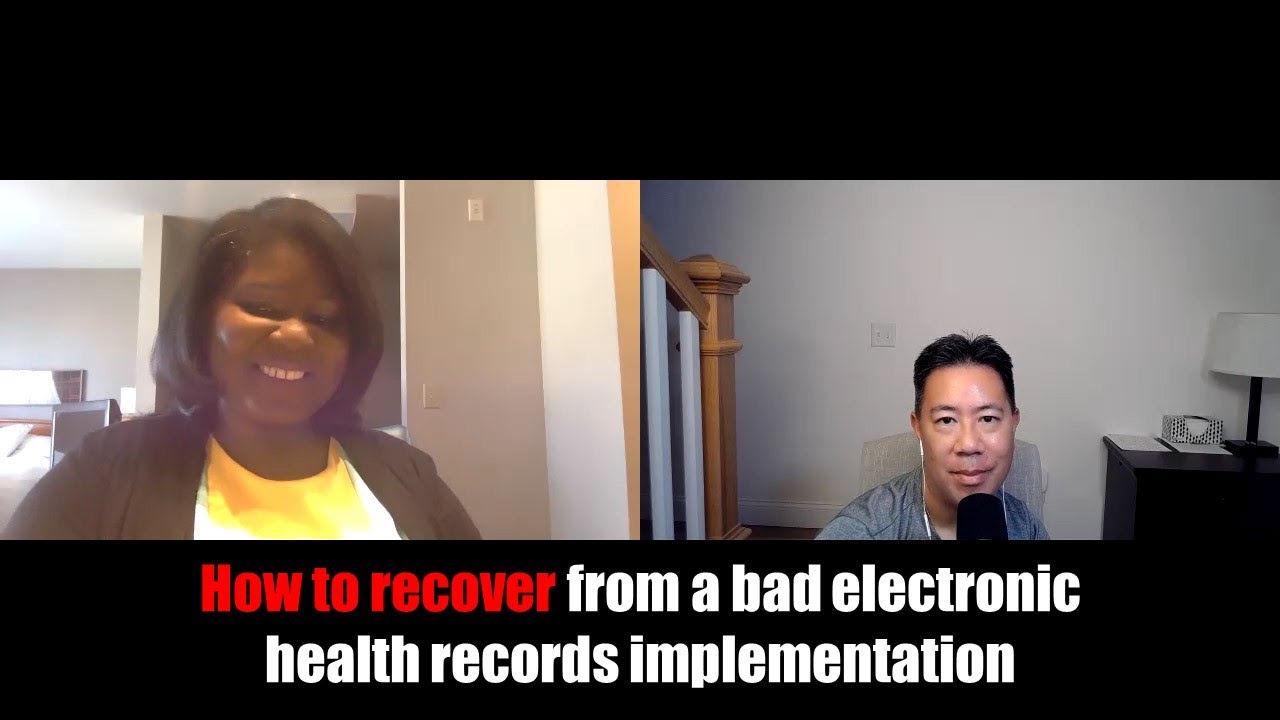
The artistic side of a broken pot: a story about Oracle and Cerner
I recently had an opportunity to assist a hospital organization with its electronic health records implementation in Las Vegas. I’m usually working non-stop during implementations, but I was ecstatic when I could get a break from work to sightseeing. I arranged with a tour bus to explore the Grand Canyon (I’m not much into gambling).
I reported to the tour bus at 6 a.m. and was ushered inside the remarkably comfortable bus with my fellow travelers. I sat across from a young Japanese man named Ginjz. We proceeded to engage in small talk. The topic eventually came to Kintsugi, the Japanese art of repairing broken pottery by mending the areas of breakage with mixed gold, silver, or platinum. In Japanese culture, when valuable pottery breaks, there is a process where the breaks are highlighted with metal ornamentation to emphasize the imperfection, not hide it. The broken crockery that is rebuilt becomes more valuable than the previous form.
I couldn’t help but relate this story to the acquisition of Cerner by Oracle last year for just over $28 billion. It remains to be seen how Oracle will incorporate Cerner into its larger business. It’s also a mystery how Oracle will change Cerner as the company moves into the future. As John Moore, author of the article, “The Repercussions of Oracle’s Acquisition of Cerner,” explains, “Oracle has set up Cerner as a stand-alone division within Oracle that may provide some autonomy and unlike previous Oracle acquisition(s) where the company had some domain expertise.” It’s uncharted territory for both entities.
Oracle has been an exceedingly small player in the electronic health records (EHR) provider market and is heavily dependent on Cerner to make this acquisition work. However, Oracle’s expertise in cloud-based technology could be a game-changer for the health care IT world.
Cerner is coming off a challenging year. In addition to being acquired by Oracle, the company’s other big headline in 2021 was the failed rollout as the replacement EHR at Veterans Administration hospitals. A successful integration by Oracle could provide the synergy the company needs. While Cerner is a significant player in EHR, Oracle dwarfs the company’s size with annual revenue of over $40 billion. That revenue could open up new opportunities for Cerner that didn’t exist before. Its prominent presence in tech-heavy locations such as Silicon Valley and headquarters in Austin, Texas, will help the company attract the talent it needs to grow.
Perhaps by being acquired by Oracle, Cerner has found the gold bond needed to “Kintsugi” the cracks created by the past. The strength of this acquisition would be an innovative force that makes the electronic health record giant more potent than before.

Physician informatics demystified
Nurse: “I need help with the computer; patient transfer needs to be completed.”
Me: “Ma’am, the patient’s medications are on ‘MAR HOLD,’ which means Medication Administration Record Hold. Therefore, we cannot administer medication unless an attending physician releases this hold. Can we get the physician on the phone for him to reconcile the meds?”
Nurse: Reluctant to call the physician, insists on completing the transfer at the unit manager screen. Finally, she places a call to the surgeon and hands me the phone.
Me: “Dr. Smith, we are having issues with reconciling your medication request.”
Dr. Smith: In a voice of frustration, “I left the hospital. Can’t the nurse reconcile the medication? I know how to reconcile medication, but there seems to be something wrong with the system. Can you find someone else who can reconcile the medication?”
Nurse: Shoves another phone toward my face and exclaims, “It’s dietary.”
Dietary: “Please, educate the doctors to place diet orders in the system correctly! Patients are going hungry because they are doing it wrong.” Me: “Yes, I will do my best to teach them when I have the first opportunity.”
Dr. Anderson: Walks up to me and exclaims, “Can you help me order electrolytes? The pre-built order set is not set to our protocol.”
Dr. Robinson: “Why does the discharge prescription paper print at the location of the patient? What if someone takes hold of the script paper and forges my name? It should print at the location of the physician. You know what, I’ll just write the script paper.”
This is a typical day in the life of a physician informaticist when helping health care organizations implement new electronic health records (EHR). The process can be challenging, frustrating, and seemingly impossible to navigate. Often, the software needs to be fixed, and optimization of the software can seem painstakingly slow, which exacerbates the situation. However, a physician informaticist is the provider/end user’s advocate in the process. We continue to create ways to make the implementation process more effective and less stressful.
We want to improve physician satisfaction, and lessons learned to minimize burnout by being a bridge between the physician and the EHR during the implementation of the new system. We accomplish this by smoothing communication between clinical and operational staff. We have experience engaging with providers, allowing them to master the new electronic health records system.
In the scenario above with Dr. Smith, there was a glitch in the system, we placed a ticket for the issue with the technical team, and it was promptly resolved. I assisted Dr. Anderson in creating an order panel that reflected hospital protocol. After that was accomplished, I helped Dr. Robinson set up an e-prescription for controlled substances. Finally, I educated the providers on placing correct dietary orders as requested by dietary.

A Patient Caught in the Middle of a Communication Crisis
A 65-year-old female presents to the emergency department (ED) with contusion from a fall at work. She has no loss of consciousness. Two other employees at her workplace, the cardiac floor of the same hospital as the ED, witnessed the fall. The patient has a previous medical history of fatigue, GI issues, and a loss of appetite for the last two days. She also has anemia which her primary care physician is currently treating. Notes from the primary care physician (PCP) have been requested. However, there is a time delay because her hospital-based PCP uses Epic Systems while the hospital uses Cerner electronic health records (EHR). The interoperability of the two programs has been an issue for the last several years.
And so the 65-year-old patient, her loved ones, and the care team wait while the risk of serious complications grows.
The story is not fictitious. The woman in the story is my mother. The interoperability issue between EHRs has been a known issue that started in individual communities and has become so serious that it has made its way to the U.S. Congress. Providers and legislators are becoming increasingly insistent that EHR developers provide a solution. At the same time, these companies feel that software coding is a proprietary issue and not something they would benefit from sharing.
The importance and advantages of electronic health records depend on portability and accessibility. Software interoperability is needed not only for patient records transfer but also for reporting billing data, and public health knowledge. For communities with more than one hospital provider, easy transfer of files is needed for efficient workflow and the elimination of ambiguity between providers. However, corporate interests have taken their time in creating a standard communication system of creating more market share in a very competitive EHR marketplace. The reluctance of software developers has not gone unnoticed. In 2016 the federal government signed the 21st Century Cures Act into action. The law changed a series of medical issues, from transferring medical records to developing orphan drugs for rare diseases. [An orphan drug is a pharmaceutical agent developed to treat medical conditions that would not be profitable to produce without government assistance because they are so rare.]
Israel has been paperless for nearly 20 years. While it's hospitals are not all on the same EHR systems, those systems can exchange data. This affords them cohesive EHR systems, excellent clinical care safety, and better experiences for clinicians and patients.
My mother’s health records were eventually transferred as requested. The following day she was discharged and is now recovering at home. She will follow up with her PCP for further medical attention. In her case, the delay of medical record sharing did not result in any harm. For other patients, that may not be the case; information can make a significant difference in making decisions and also preventing unnecessary repeat testing and procedure. When two different EHR systems can communicate seamlessly, there is no such delay; this would increase patient engagement and possibly lead to better outcomes.
Many thanks to the ED staff that cared for my mother. Special thanks to the emergency department attending Dr. Saullis for not only taking good care of my mother but calling to follow up. It was a joy hearing from you and knowing that you cared.

From Electric Fish to Smart Device EHRs: The Mind-blowing Evolution of Healthcare Technology
Fun fact: the first recorded use of electric stimulation to ease pain was in...get ready…CE 46! That’s right, nearly 2,000 years ago, ancient Roman writer Scribonius Largus described the use of torpedo fish, aquatic animals capable of electrical discharge, to heal. This system is still as common in healthcare settings as a conventional TENS Unit (transcutaneous electrical nerve stimulation). Similarly, many healthcare IT innovations (technological innovation, generally) are primarily foundation technologies updated to be used in powerful new ways. (Thankfully, fish are, based on my research, NOT involved in any technology roadmaps.)
The current age of healthcare innovation is being colored by new partnerships and cooperative agreements to meet changing consumer needs. Allscripts is jumping in deep with healthcare innovation by partnering with Microsoft cloud technology to develop a robust internet-based storage solution. This alliance allows both companies co-innovation opportunities. Allscripts aims to prioritize interoperability and data sharing of health information to be done securely while enhancing the patient experience and participating in value-based care reimbursement. Microsoft benefits from entering the healthcare IT space while minimizing risk by working with a known brand.
Furthermore, Allscripts has obtained several patents that will enhance and improve accessibility and delivery. One patent is a patient monitoring application that allows care teams and patients to interact directly via the electronic health records (EHR) messaging portal. Care providers have direct access to monitor patients' overall health, such as vital trends. Treatment teams can be automatically alerted when specific parameters are exceeded, allowing faster and more efficient care; patients will have the option to communicate their vital readings, such as glucose and blood pressure, to their healthcare providers. Again, improved quality of care while decreasing payer costs.
Apple is also making waves in the healthcare IT arena with its mobile health platform. Consumers can access their health records directly from their iPhone or Apple Watch to keep track of healthcare vitals that can be automatically updated into a health system's EHRs. Apple Health app allows easy access to patients’ medical records from multiple providers whenever they choose. Plus, the health records data is encrypted and protected with the user’s device passcode.
Epic Systems has announced its intention to integrate artificial intelligence/voice recognition features in its next-generation EHR. This would improve healthcare providers with increased writing efficiency. Think of an Amazon Alexa for your EHR. Cerner is making strides in pricing transparency and revenue cycle to make healthcare more cost-effective and personalize the cost of care more to consumers.
Companies have made multiple attempts in the past to develop healthcare technologies that allow people to use medical services from home. But, adoption has been a struggle. The issue has always been consumer demand for such tech. Covid-19 has changed all that, and in October of 2020, new services are paid for by insurance and Medicare. This has changed the technology drivers and created new enthusiasm and revenue streams for healthcare technology companies.

How to recover from a bad electronic health records implementation
Is your health care organization reeling from a bad EHR implementation?
There have been rumblings from hospital leadership and congressional committees about the Veterans Administration (VA) Hospitals’ implementation of the Cerner Corporation electronic health record (EHR) replacing the VistA EHR. The $10 million EHR overhaul has been controversial since the staggered rollout started in Spokane, Washington. One report noted that months after the go-live, fewer users knew how to operate the system well.
From the perspective of an outside informaticist, such frustration can be multifactorial. The typical issues are made worse by the COVID-19 hospital restrictions on normal hospital operations. However, many of these issues could have been mitigated by offering expanded in-person expert support to hospital staff supported by virtual technical assistance.
Due to system failures, the U.S. Congress has halted the Cerner implementation process at VA hospitals. Lawmakers want concrete answers about why the issues encountered were not planned for, why training was inadequate, and the problems with software functionality. Critics are also calling into question the decision to award the EHR contract to Cerner instead of rival Epic Systems.
Before COVID-19, I participated in a Cerner implementation at Department of Defense (DOD) hospitals in Washington. At the time, I saw numerous challenges, the most concerning being workflow integration with the new system. That challenge is likely being seen at VA hospitals undergoing this transition. The question here is how a health care system can navigate through the disappointment and come out more resilient? I recommend my clients use the following five E’s to fix an implementation that has gone awry.
Evaluation. Leadership needs a complete assessment of what is causing the challenges at hand. The hospital has to evaluate workflows so the system could be tailored to the department’s needs.
Eliminate. This is the most challenging portion of the process. First, leaders need to eliminate infighting which can lead to dysfunction and animosity between workgroups. Focus on internal dynamics. I suggest a team-building session involving critical leaders from all specialties and departments, not just doctors and nurses. It should also include everyone with access to the EHR, even personnel like chaplains and dieticians.
Second, eliminate process waste. Process wastes are ideas or tasks transferred from the old systems that staff still feel the need to complete. It can also include inefficiencies learned by the team when they are inadequately trained on the new system.
Engage. Engage the clinical team with the IT team. These two groups need to communicate the issues to be fixed based on priority while maintaining patient safety.
Make sure that all of the hospital staff are fully informed in simple language that ensures transparency. The less jargon, the better. Workers need to understand their role while also feeling valuable; this promotes cohesion within the organization and each team.
Entrust. Invest in what the team needs to make an implementation a success. If they need more expanded in-person support, supply it; if they need to come in out of their regular schedule to be trained on the system, budget the time. EHR systems are expensive, but if employees do not utilize them properly, the money has gone to waste.
Experience. Mistakes and failures will potentially occur; maximize learning from other organizations that have done implementations in the past or learn from the challenges that you have faced from your implementation. It is essential to learn from your mistakes and successes.
Failed EHR implementations are expensive, demoralizing, and intimidating. However, they can be corrected and often faster than what many believe.









